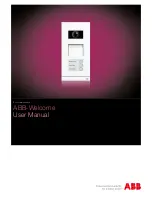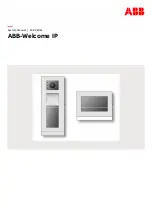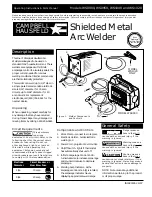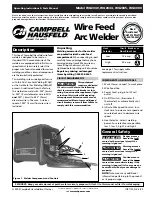
6
SUSPENSION OF LOUDSPEAKER SYSTEMS
Are You New to Rigging?
If you are new to rigging, you should do the following:
• Read and study JBL Technical Note Volume 1, Number 14: Basic Principles for Suspending Loudspeaker
Systems (available at http://www.jblpro.com/catalog/support/getfile.aspx?docid=296&doctype=3).
• Know the rules for safe rigging.
• Attend a safe rigging seminar, such as that presented by professionals like Rigging Seminars™ or by Chain
Motor Hoist manufacturers like Columbus McKinnon Corp. (manufacturers of the C/M Lodestar).
• Meet and establish a relationship with a licensed mechanical or structural engineer. Get in the habit of asking
them questions instead of guessing about their answers. Learn from what they tell you.
• Meet and discuss this aspect of your business with your Insurance Agent.
• Research and understand the codes, practices, and requirements in the venues where you intend to
operate your sound system.
General Hardware Information
Any hardware used in an overhead suspension application must be load rated for the intended use. Generally,
this type of hardware is available from rigging supply houses, industrial supply catalogs and specialized rigging
distributors. Local hardware stores do not usually stock these products. Hardware that is intended for overhead
suspension will comply with ASME B30.20 and will be manufactured under product traceability controls.
Compliant hardware will be referenced with a working load limit (WLL) and a traceability code.
Attachment to Structures
A licensed Professional Engineer must approve the placement and method of attachment to the structure prior
to the installation of any overhead object. The following performance standards should be provided to the
Professional Engineer for design purposes; Uniform Building Code as applicable, Municipal Building Code
as applicable, and Seismic Code as applicable.
The installation of the hardware and method of attachment must be carried out in the manner specified by
the Professional Engineer. Improper installation may result in damage, injury or death.
Inspection & Maintenance
Suspension systems are comprised of mechanical devices and, as such, they require regular inspection and
routine maintenance to insure proper function ability. JBL suspendable loudspeakers must be inspected for
fatigue at least annually or, if there has been significant seismic activity, immediately thereafter. The inspection
shall include a visual survey of all corners and load bearing surfaces for signs of cracking, water damage,
de-lamination, or any other condition that may decrease the strength of the loudspeaker enclosure. Accessory
suspension hardware provided with or for the JBL loudspeakers must be inspected for fatigue at least annually.
The inspection shall include a visual survey of the material for signs of corrosion, bending or any other condition
that may decrease the strength of the fastener. Additionally, any eyebolts shall be checked for possible spin-out
of the enclosure.
For all other hardware and fittings, refer to the hardware manufacturer's inspection and
maintenance guidelines for process.
JBL is not responsible for the application of its products for any purpose or the misuse of this information for
any purpose. Furthermore, JBL is not responsible for the abuse of its products caused by avoiding compliance
with inspection and maintenance procedures or any other abuse.
Prior to suspending the system, an expert, trained and experienced in suspending speaker systems should
inspect all rigging parts and components.
Содержание PRX600 series
Страница 2: ...2...
Страница 35: ......
Страница 36: ...Part Number 444833 001 6 10 8500 Balboa Boulevard Northridge CA 91329 USA www jblpro com...







































